Stepping into a freshly renovated loft, you’d notice the absence of a central light fixture. Instead, sleek tracks gracefully line the ceiling, showcasing the minimalist design. With magnetic track lighting, you could effortlessly tailor your lighting to your mood or decor changes. One day, it’s a spotlight on your reading nook; the next, it’s ambient lighting for a dinner party. The flexibility is unparalleled. This is the beauty of magnetic track lighting.
In spaces that skip a main light source, magnetic track systems stand out. They offer flexibility. They give homeowners and designers the chance to change lighting layouts without being tied to fixed fixtures. Dive into this guide and see the magic of magnetic track lighting. It’s a solution that matches the pace of modern life. Whether you’re a design enthusiast or just looking for versatile lighting, this guide lights the way to a dynamic, customizable experience.
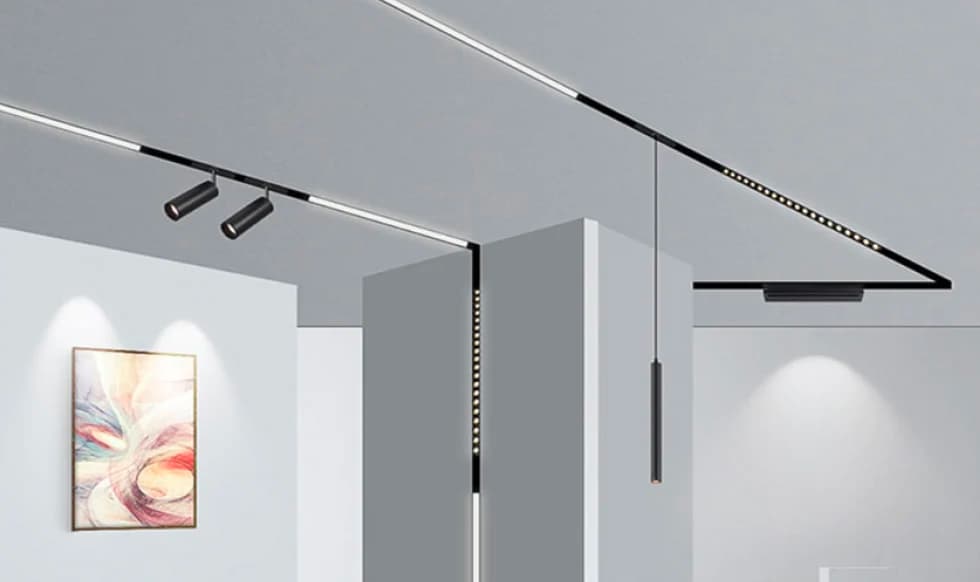
What is Magnetic Track Lighting System?
This indoor lighting solution operates on low voltage and is characterized by its unique assembly that accommodates diverse light sources through magnetic attraction.
Magnetic track lighting systems come in a variety of lengths and dimensions, with the lighting specifications varying based on the chosen fixtures. The light fixtures include track in different size and various connectors, track spotlight, track grille light, track linear light and LED pendant light. It’s essential that the light fixture is compatible with the magnetic track system. Typically, these fixtures are equipped with LED lights, designed specifically for magnetic attachment.
Unlike traditional fixtures that remain static, these systems offer dynamic adaptability. Comprising sleek tracks that can be mounted on walls or ceilings, they allow individual light modules to be placed, adjusted, or removed with ease, all leveraging the simplicity of magnets. This means that as your space evolves, so can your lighting—without the need for complex installations or renovations.
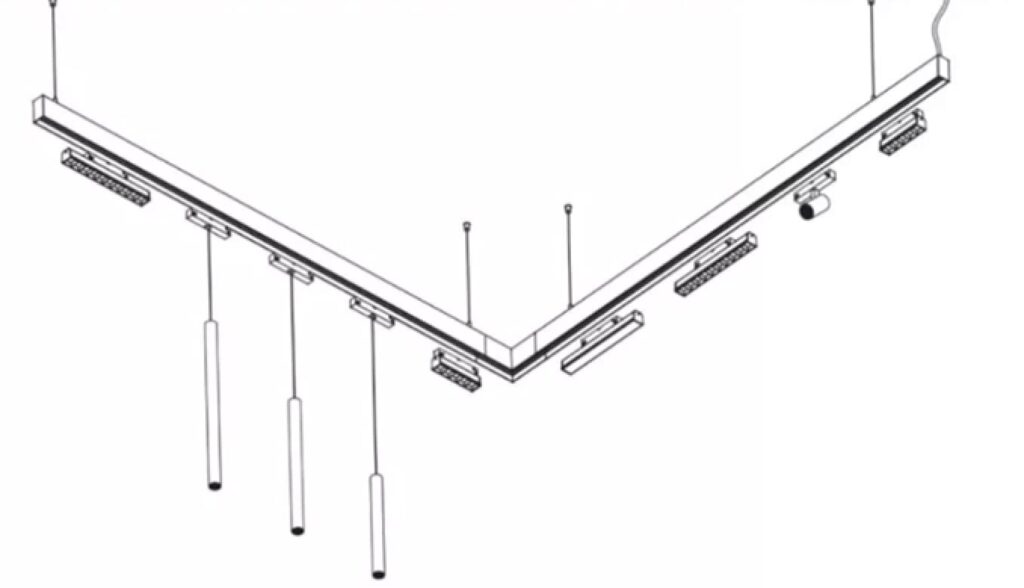
Why Choose Magnetic Track Lighting System?
In the realm of modern lighting, the magnetic track light system has emerged as a game-changer. But what makes it a preferred choice for many? Let’s delve into the compelling reasons:
Dynamic Flexibility
Unlike traditional lighting, magnetic track systems allow you to easily reposition, add, or remove light modules. This adaptability is perfect for those who frequently change their interior decor or require different lighting moods for various occasions. For instance, a cafe owner shifted the lighting focus to a newly installed art piece during an exhibition, all without any professional help.
Sleek Aesthetics
The minimalist design of magnetic track lights seamlessly integrates into contemporary spaces, enhancing the overall look without being obtrusive. A modern office space utilized these lights to maintain a clean ceiling look, avoiding the clutter of multiple fixtures.
Easy Installation
Say goodbye to complex wiring and time-consuming installations. With magnetic track lights, setting up is a breeze. The magnetic attachment ensures that light modules snap into place effortlessly. A homeowner recounted how they revamped their living room lighting in just an afternoon with these systems.
Energy Efficiency
Most magnetic track light fixtures are equipped with LED lights, known for their energy-saving properties. This not only reduces electricity bills but also promotes a greener environment. A retail store reported a 30% reduction in energy costs after switching to magnetic track lights.
Safe and Low Voltage
Operating on low voltage, magnetic track lights ensure safety, reducing the risk of electrical hazards. A school chose these lights for their classrooms, prioritizing the safety of their students.
Cost-Effective in the Long Run
While the initial investment might be higher than conventional lights, the durability, energy efficiency, and reduced maintenance needs of magnetic track lights ensure cost savings in the long run. A business complex noted that despite the initial cost, they saved significantly on maintenance and replacements over a span of three years.
Versatility
Whether it’s for a commercial showroom, a cozy cafe, or a residential living room, magnetic track lights fit in perfectly. Their ability to spotlight specific areas or provide ambient lighting makes them suitable for a wide range of applications. Furthermore, magnetic track lighting systems embrace a modular design, allowing for a diverse range of light source modules. From downlights, flood lights and spotlights to grid lamps, magnetic pendant light, and recessed linear lighting, the choices are vast. This means you can tailor the lighting precisely to the needs of your space. For example, a homeowner could easily switch from ambient downlights in the living room to focused spotlights highlighting a sculpture, offering a DIY approach to meet unique lighting demands.
Wireless Intelligent Control
Magnetic track lighting systems now come with advanced wireless control options, including Bluetooth and Zigbee dimming capabilities. This not only simplifies the installation process by reducing wiring complexities but also significantly cuts down on installation costs. The integration of such smart controls allows users to effortlessly adjust their lighting, achieving a tailored ambiance and enhancing the overall lighting experience. For example, a homeowner can easily set the mood for a movie night or a dinner party using a smartphone, without the need for any additional equipment or switches.
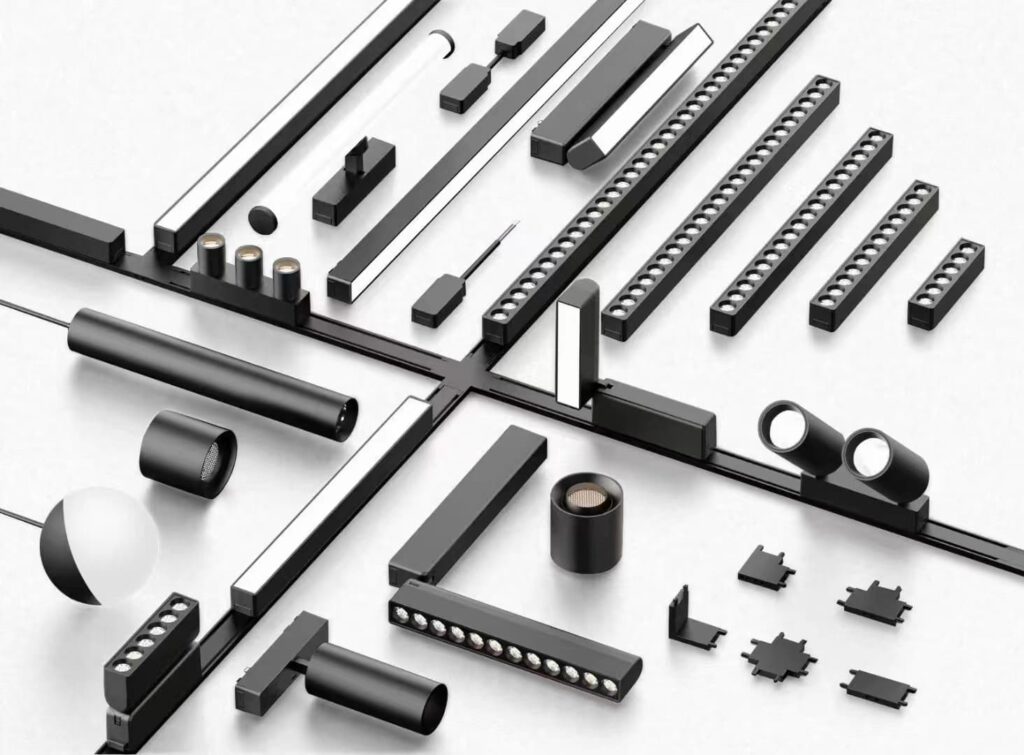
Challenges and Limitations of Magnetic Track Lighting Systems
While magnetic track lighting systems offer numerous advantages, it’s essential to be aware of their potential limitations and challenges:
Initial Cost
The upfront investment for magnetic track lighting systems can be higher than traditional lighting solutions. While they offer cost savings in the long run due to durability and energy efficiency, the initial price point might deter some.
Installation Complexity
While individual modules are easy to install, setting up an extensive system might require professional assistance, especially when integrating with existing electrical systems or when custom configurations are needed. Being a newer product in the market, it might pose challenges during installation. Carpenters and electricians, unfamiliar with this system, might face initial hiccups or make installation errors. This can lead to higher early communication and correction costs to ensure the system is set up correctly.
Magnetic Interference
The magnets in the track system might sometimes cause interference with nearby electronic or magnetic devices. It’s essential to ensure that the magnetic track lighting system meets Electromagnetic Compatibility (EMC) standards to prevent disruptions to the operation of adjacent gadgets or equipment.
Limited to Indoor Use
Most magnetic track lighting systems are designed for indoor use. Using them outdoors or in areas with high humidity can compromise their performance and lifespan.
Maintenance of Tracks
While the LED modules themselves are low maintenance, the tracks can accumulate dust and debris over time. Regular cleaning is necessary to ensure optimal performance and aesthetics.
Compatibility Issues
Not all light modules are compatible with every magnetic track system. Magnetic track lighting systems come in various sizes and voltage options. Common track widths include 16mm, 22mm, and 35mm, catering to different aesthetic and functional needs. Additionally, these systems can operate at low voltages like 12V or 24V, mid-range voltages such as 48V, or mains voltages which can be 120V or 220-240V depending on the region. It’s essential to ensure that any additional or replacement modules you purchase are compatible with your existing track.
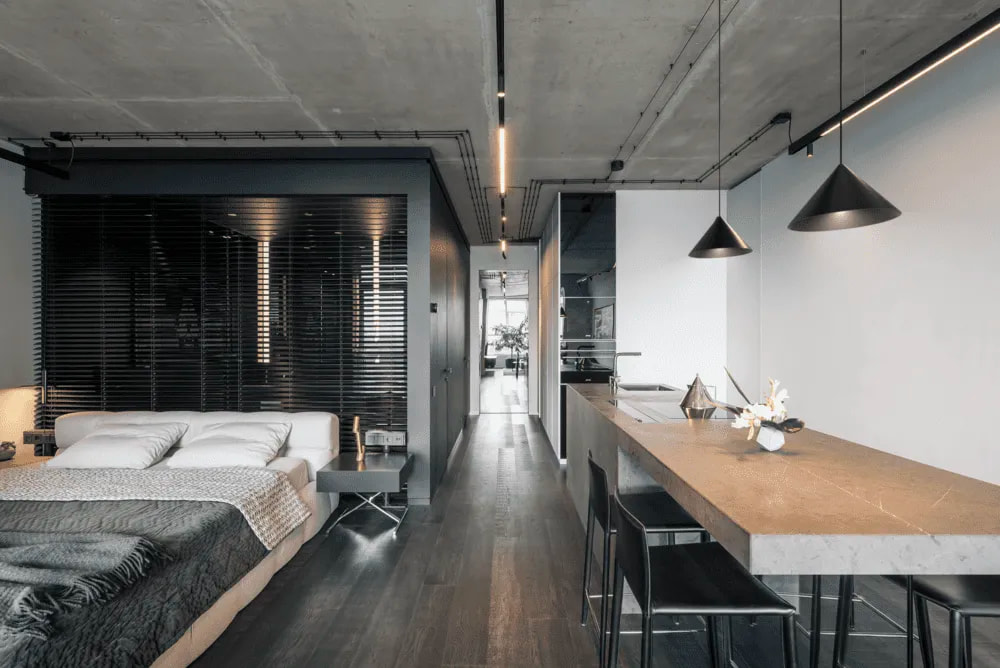
Magnetic Track Lighting System: How Does It Work?
The magnetic track lighting system operates using the principles of magnetism. Here’s a breakdown of how this popular system works:
Magnetic Base Track
The foundational track, which is mounted to the ceiling or wall, contains a continuous magnetic strip. This strip is what allows the individual light fixtures to attach magnetically. Think of the track as a long magnetic bar that you can stick things to, just like a fridge door where you might stick a magnet.
Magnetic Light Fixtures
Each light fixture is equipped with a magnetic base. This base is designed to securely attach to the magnetic strip on the track. The strength of the magnets ensures that the fixtures stay in place, even if they’re bumped or jostled. So, they stick to the track just like your fridge magnet sticks to the door.
Electrical Conductivity
Along with the magnetic strip, the track contains electrical conductors. When the magnetic light fixture is attached to the track, it forms an electrical connection through metal contacts on its base. This allows the light fixture to draw power from the track and illuminate. This is what makes the light turn on.
Adjustability
One of the primary benefits of the tracking magnet system is its adjustability. Because the light fixtures are held in place by magnets, they can easily be repositioned along the track without the need for tools or rewiring. Simply slide the fixture to its desired location, and the magnets will hold it in place. It’s like moving your fridge magnet to a new spot.
Safety Mechanisms
To ensure safety, many magnetic track systems are designed with features to prevent electrical shorts. For instance, the system might be designed so that power is only delivered to sections of the track where a light fixture is attached. This prevents exposed sections of the track from being live and posing a potential hazard. So, no worries about touching the track and getting a shock.
Low Voltage Operation
Many magnetic track lighting systems operate on low voltage, which enhances safety. The track itself might have a transformer that converts the incoming line voltage to a lower, safer voltage for the lights.
In essence, the tracking magnet system combines the principles of magnetism and electrical conductivity to create a flexible, adjustable lighting solution. The use of magnets allows for easy adjustments and customizations, while the integrated electrical conductors provide power to the individual light fixtures. It’s as simple as playing with fridge magnets, but for lighting up your room!
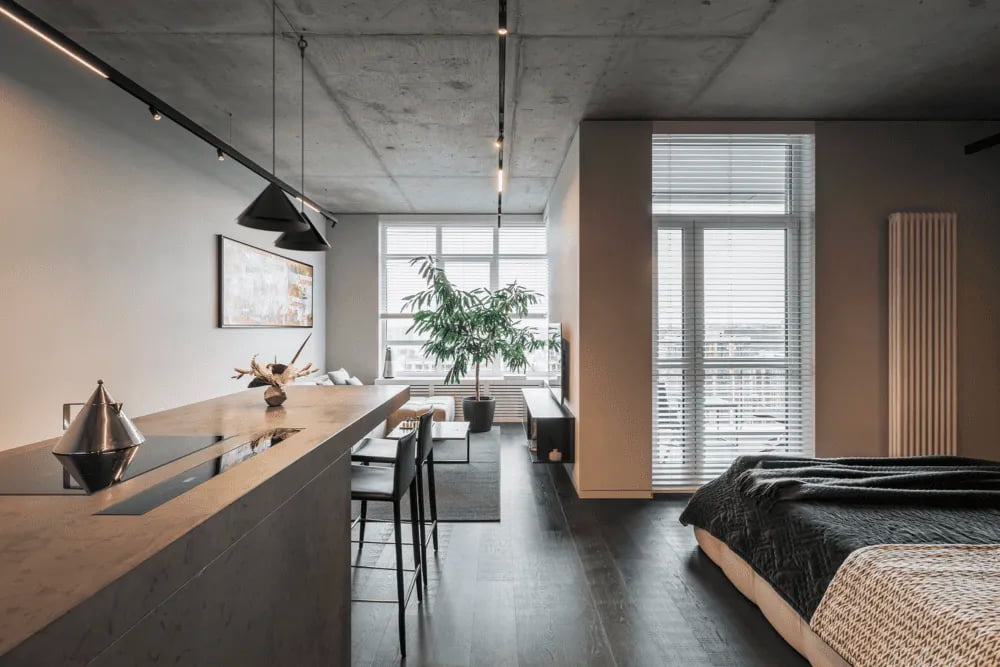
Types of Magnetic Track Lighting System
Magnetic track systems have evolved to cater to diverse needs, and their classification reflects this versatility.
Predominantly, they are categorized based on working voltage, with the low voltage systems of DC48V and DC24V being the most popular in the market. There’s also an emerging high voltage variants operating at AC110V or AC220V.
In terms of size, they range from the larger 35mm width commercial track rail to the medium 22mm width and the slim 16mm width track rail.
The conduction mode, another distinguishing factor, can either be from the side, with 2-wire and 4-wire systems, or from the bottom with a 2-wire system.
Additionally, some magnetic lightings come with an internal power supply, while others require an external one.
Functionality-wise, they can be as basic as having just an on/off function or more advanced with features like 1-10v dimming, Dali Dimming, and even Tuya app control(2.4G, WIFI, Bluetooth, and Zigbee.). Notably, only the 1-10V and DALI versions require an additional signal cable wired to the track. In contrast, the 2.4G, WIFI, Bluetooth, and Zigbee options are wirelessly controlled via the Tuya platform.
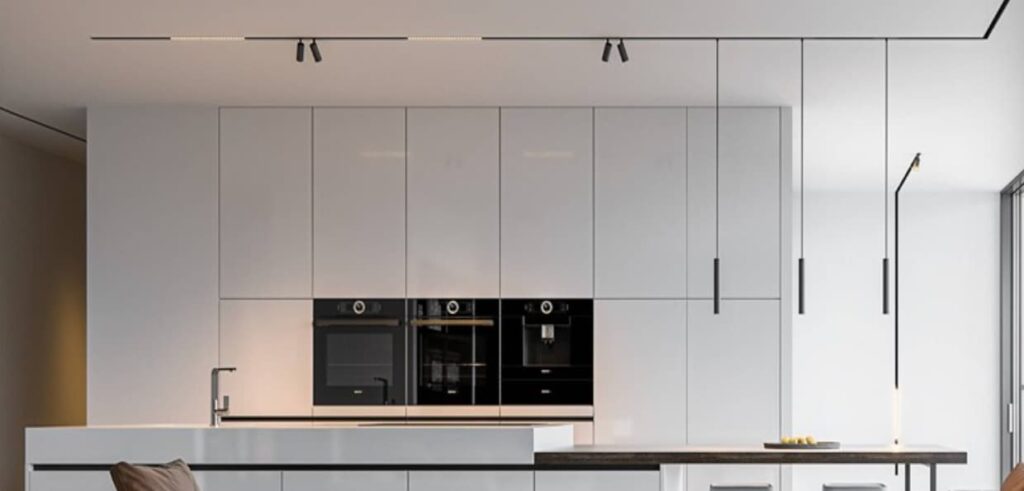
How to Install Magnetic Track Lighting System?
The magnetic track lighting system offers three primary installation methods: recessed, ceiling-mounted, and suspension or pendent. If you’re contemplating a recessed setup, it’s vital to check if your ceiling or wall is constructed from plasterboard. Plus, there should be sufficient room to fit the track’s height. On the other hand, if you’re inclined towards a surface mount or a suspended approach, it’s paramount to gauge the strength of your ceiling or wall to ensure it can bear the weight of the track and the lights attached to it. For those opting for the suspension method, it’s also essential to measure and adjust the length of the suspension cables or rods to achieve the desired positioning. A general rule of thumb for suspended installations is to have a ceiling height of at least 2.7 meters (around 9 feet) to guarantee enough space below the lights, ensuring both ease of movement and an open ambiance.
For those looking to modernize their spaces, the recessed installation of magnetic track lighting offers a sleek, embedded look within the ceiling, especially favored in new constructions. Alternatively, the ceiling-mounted method is a direct approach, placing the track right onto the ceiling without any need for cuts, preserving the ceiling’s original state. Meanwhile, for settings like offices or dining areas, the suspension installation hangs the track, adding a touch of contemporary elegance.
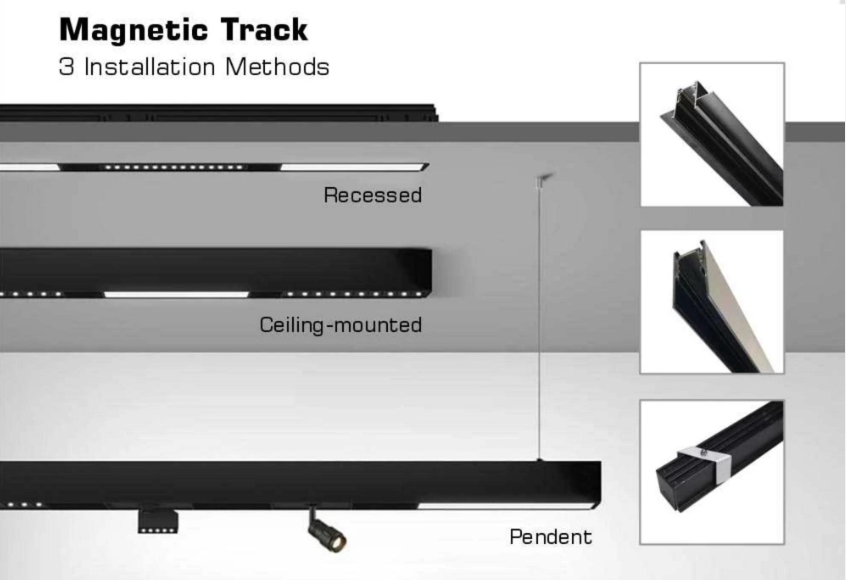
Here’s a basic guide on how to install a Magnetic Track Lighting System:
Preparation
Ensure you have all the necessary tools and materials. This typically includes the magnetic track, light modules, screws, a drill, a level, wire strippers, and connectors.
Turn off the power to the area where you’ll be working to avoid any electrical hazards.
Measure and Mark
Decide where you want the track to go. Use a pencil to mark the start and end points.
Use a level to ensure the track will be straight.
Mounting the Track for Different Installations
For the recessed installation, you’ll want to align the track with the marked area on the ceiling or wall, drill pilot holes for accuracy, and then secure the track using the provided screws or those suitable for your surface.
When it comes to surface mounting, the track is positioned directly onto the desired ceiling or wall surface. After ensuring it’s straight with a level, pilot holes are drilled through the track’s mounting holes, and it’s then attached using appropriate fasteners.
For suspension installations, the process involves determining the drop length from the ceiling, securing suspension cables or rods of that length to the ceiling, and then attaching the track to the lower end, making adjustments to ensure it hangs at the desired height and maintains a level appearance.
Electrical Connections
First strip the ends of the electrical wires. Then connect the wires from the track to your home’s electrical system, usually matching colors: black to black (hot), white to white (neutral), and green or bare to green or bare (ground). Use wire nuts to secure the connections and electrical tape to ensure they’re insulated.
For dimming installations, there’s an additional step. Besides the standard connections, there’s typically a separate dimming control wire, often red or blue. This wire connects directly to your dimmer switch or controller. Ensure this dimming wire is securely connected to ensure proper dimming functionality. Always refer to the manufacturer’s instructions or consult an electrician for specific guidance on dimming setups.
Attaching the Light Modules
Once the track is securely mounted and connected, you can begin placing the light modules. Simply position the module close to the track, and the magnets will pull it into place. Ensure each module is securely attached.
Power On and Test
Turn the power back on. Test each light module to ensure it’s working correctly and adjust the positioning as needed.
Adjustments and Customization
One of the key benefits of magnetic track lighting is the ease of adjustments. You can slide the modules along the track or even add/remove modules based on your lighting needs. Once you’re satisfied with the placement and functionality, you can add any additional aesthetic touches, like track covers or decorative elements.
Remember, while the installation process for magnetic track lighting is straightforward, if you’re unsure about any steps, especially the electrical connections, it’s always best to consult with or hire a professional electrician. Safety should always be the top priority.
Tips to Choose a Magnetic Track Lighting System
Consider the Room’s Layout
The shape and size of the room can influence the length and configuration of the track system. Measure your space and plan the layout accordingly.
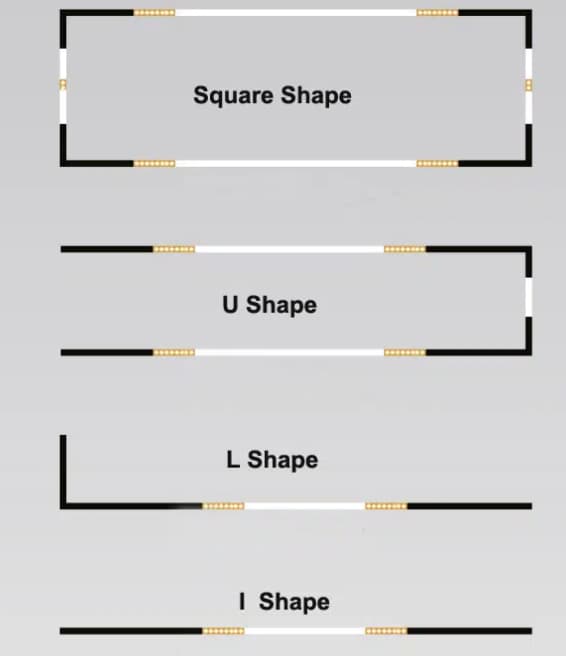
Check the Voltage and Size
Magnetic track lights vary in voltage and dimensions. It’s essential to match the voltage with your electrical setup and pick a track size fitting for your space. The DC48V system is prevalent in magnetic track lighting due to its consistent performance, devoid of the voltage drops seen in the DC24V system. For commercial venues with ceiling spans of 5-10 meters, the broader 35mm track is ideal, catering to heightened power and quality needs. On the other hand, upscale villas with ceilings between 3.5-5 meters should lean towards the 35mm track. For typical residential areas with more confined spaces and shorter ceilings, the medium (22mm width) or slim (16mm width) tracks are more appropriate.
Consider Purpose of Lighting and the Right Bulb Type
Understanding the primary purpose of your lighting is crucial. Is it for general illumination, task lighting, accent lighting, or a mix? Your choice will not only determine the number of fixtures you’ll need but also their specific types, such as spotlights for highlighting artwork or pendant lights for creating ambient illumination in dining areas.
Additionally, it’s vital to factor in aspects like brightness (lumens), wattage, color temperature, and energy efficiency when selecting the right bulb type.
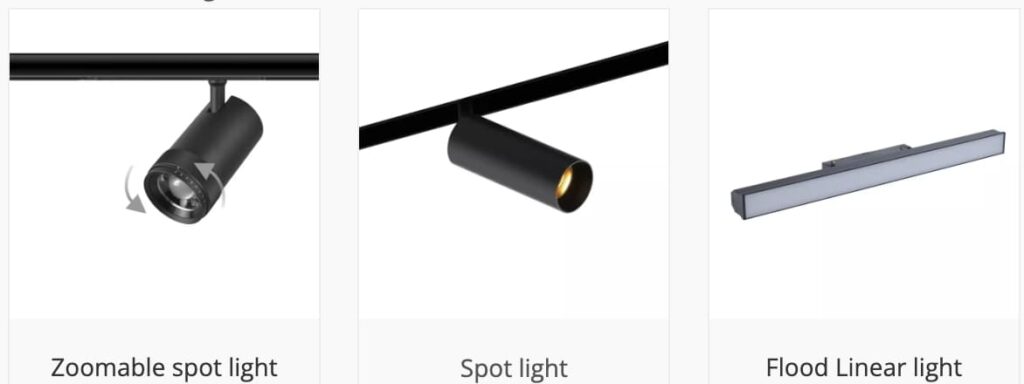
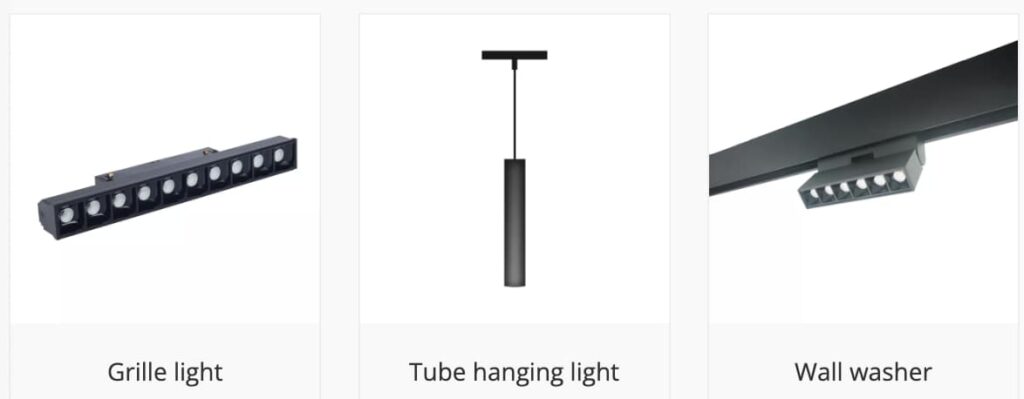
Check for Dimming Capabilities
If you want to adjust the brightness, ensure the system supports dimming. Also, consider if it offers wireless intelligent control, like Bluetooth or Zigbee dimming, for added convenience.
Spacing Between Fixtures
For general ambient lighting in a room, fixtures should be spaced evenly throughout the track. For specific tasks like reading or cooking, fixtures, preferably spotlights, should be positioned directly above or close to the work area. To accentuate artwork or architectural features, fixtures, often angled spotlights, should be directed towards the object, typically spaced closer together than for general illumination.
A common rule of thumb is to space fixtures approximately 12 to 24 inches apart for general ambient lighting. However, this can vary based on the specific light output of the fixtures and the desired illumination level.
Understanding Circuit Options
The way you set up your circuit can greatly influence how you control your magnetic track lights. One option is the series connection, where all the lights are linked in a sequence. In this setup, if one light goes out, it might affect the others in the chain, much like old Christmas lights.
On the other hand, a parallel connection offers more flexibility. In this arrangement, each light operates independently. This means you can control sections of lights separately, providing more customization in lighting moods. Moreover, in the event of a power surge, a parallel connection can be a safeguard. If one light is affected, the others remain operational, ensuring continued illumination.
Considering Room Height
Room height is crucial when selecting magnetic track lights. For ceilings around 2.5 meters (8.2 feet), fixtures of 10-15 watts are ideal. Higher wattages can cause glare in such spaces. For taller rooms, around 3.5 meters (11.5 feet), 20-25 watts ensure adequate illumination. Medium-height rooms, approximately 3 meters (9.8 feet), benefit from 15-20 watt fixtures. Additionally, consider the beam angle: narrower for high ceilings and wider for low ones. Matching wattage and beam angle to room height ensures optimal lighting.
Considering Beam Angle
Narrow beam angles (10° to 25°) are ideal for accent lighting or when you want to focus light on specific areas. Wide beam angles (35° to 60°) are suitable for general ambient lighting, especially in rooms with standard ceiling heights.
Light Color and Intensity
Consider the desired mood of the room. Warmer colors (2700K to 3000K) create a cozy atmosphere, while cooler colors (3500K to 5000K) are energizing and suitable for task lighting. Dimmable fixtures can be beneficial, allowing you to adjust the light intensity based on the time of day or activity.
Other Architectural Features
Be mindful of windows, skylights, or other light sources. These can influence the placement and number of fixtures needed. Consider any obstacles or features like beams, fans, or decorative elements that might interfere with the track or fixtures.
How to Identify the Quality of Magnetic Track Lighting System?
Choosing the right magnetic track lighting can be tricky. But don’t worry! Before diving deep, it’s essential to grasp some foundational indicators of quality. From examining the material quality and understanding the production process to comparing LED modules and checking the Warranty, we’ll guide you through the key aspects to consider. Ready? Let’s jump in!
Material Quality
When assessing the quality of a magnetic track lighting system, consider the rail’s base material, such as high-grade aluminum or steel, for durability. The surface finish, like anodizing, protects against wear, while the rail’s thickness ensures stability and support. Additionally, a thicker copper strip within the rail guarantees efficient conductivity and consistent lighting performance. These factors combined offer a glimpse into the system’s overall reliability and efficiency.

The Production Process
The copper rail and plastic co-extrusion process in magnetic track lighting systems ensures enhanced durability and efficient electricity conduction, thanks to the robust combination of materials. This method not only offers a sleek design but also enhances safety with the insulating properties of plastic. Furthermore, it’s a cost-effective and environmentally friendly production approach, making it a standout choice in modern lighting solutions.
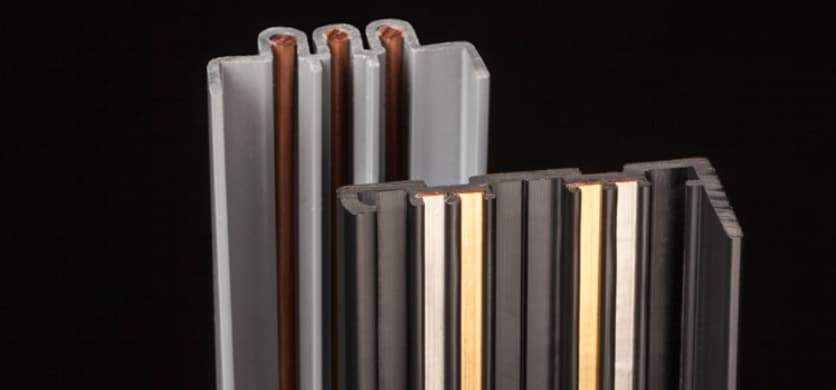
Comparing LED Modules
Appearance Quality
Check for uniformity in color and finish. For instance, a batch of 100 modules should have less than 2% with visible defects to be considered of high quality.
Heat Dissipation
Efficient heat dissipation can extend the lifespan of LED modules. A quality module should maintain a temperature below 60°C (140°F) after 24 hours of continuous operation.
Track Head Magnet Attraction Level
The magnet should have a pull force of at least 5kg (11 lbs) to ensure it remains securely in place under various conditions. The magnets should firmly hold the fixtures in place, allowing for easy adjustments without the risk of them falling off.
Magnet Temperature Test
After 24 hours of continuous operation, the magnet’s temperature should not exceed 50°C (122°F). Exceeding this could compromise the magnet’s performance and lifespan.
LED Modules Plug In and Out Destructive Testing
A quality module should withstand at least 10,000 plug-in and plug-out cycles without significant wear or loss of functionality.
Type of Magnet in LED Modules’ Track Head
The use of permanent magnets (often referred to as “rare earth” or “neodymium” magnets) in the track head ensures a strong and consistent magnetic force. Permanent magnets retain their magnetic properties for a very long time, ensuring that the LED module remains securely attached to the track. This is especially important in environments where the lights might be adjusted frequently.
LED Chip Brand
A quality system uses reputable LED chip brands like Cree, Philips, or Osram. The chip’s consistency and color rendering are indicators of its quality.
Driver Brand
The driver is the heart of any LED system. Renowned brands tend to offer more reliable and efficient drivers that ensure consistent performance and longer lifespans. Brands like Philips, Mean Well, and Osram, among others, are often associated with high-quality drivers. It’s advisable to check for certifications and reviews when considering lesser-known brands.
Luminous Efficiency
Measure the lumens per watt. A higher ratio indicates better energy efficiency and quality.
Warranty
Manufacturers confident in their product’s quality will offer longer warranties such as 5 years warranty.
Conclusion
Magnetic track lighting has revolutionized the way we illuminate our spaces, offering unparalleled flexibility and adaptability. Whether you’re redesigning a cozy home or a sprawling commercial space, these lights cater to diverse needs, effortlessly blending with various interiors. From the sleek designs to the varying sizes, there’s a magnetic track light for every room and purpose.
Remember, the key to achieving the perfect ambiance lies in considering factors like room height, light spacing, design, color temperature, and beam angle. Armed with the insights from this guide, you’re well-equipped to make an informed choice.
If you’re on the brink of a lighting project or considering an upgrade, don’t hesitate to reach out to Sinolumi LED Ltd. Our team of experts is here to guide you every step of the way, ensuring you get the best in class service and solutions tailored to your needs. Contact us now. Let’s illuminate your space together!
